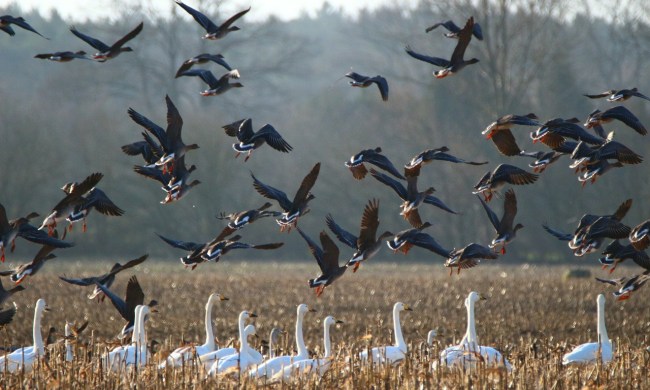
These subtle lights may be small, but you’ll see a huge improvement wherever you choose to place them. Revamp your backyard with our top picks for fairy lights.
You’ll want to consider the length and styles of different types of fairy lights. String lights are great to hang around the perimeter of a balcony, while curtain lights can be hung from a pergola roof to create a wall. Some fairy lights are powered through solar energy or by batteries. This list will help you find the best fairy lights for your outdoor area.
GDealer 4-Pack LED Fairy Lights
Best Overall

If the warm white glow of fairy lights is what you're looking for, try the GDealer 4-Pack LED Fairy Lights. This 4-pack of waterproof and portable lights are powered by AA batteries (not included) and are easily operated using the included remote controls. Adjust the brightness, or switch the lights' setting to wave, flash, slow fade, twinkle, and more—each string of lights measures 16.4 feet long.
Lighting Ever LED Curtain Lights
Best Curtain

For a beautiful, outdoor backdrop or wrapped around a pergola, opt for the Lighting Ever LED Curtain Lights. This 9.84-feet by 9.84-feet curtain of outdoor string fairy lights comes with 18 light strands containing 17 LED lights. Long enough to cover most windows, these are the best curtain lights to hang across sheer drapes for a soft glow effect. To choose among seven blinking modes, including slo-glo, flash, waves, and steady, simply push the transformer button. These lights operate with low voltage, making them safe to touch and heat-free.
Kolpop Solar String Lights
Best Solar

You can light up your backyard while saving money on your electricity bills with the Kolpop Solar String Lights. This 78.7-foot string of 240 LED lights uses solar energy for charging with its included solar panel. Simply stake the solar panel in a spot with access to plenty of direct sunlight, and it will begin to convert and store it into electrical energy. Fully charged, these outdoor, solar-powered fairy lights can shine for up to 10 hours. These lights are waterproof and heat-resistant, meaning prolonged use will not result in overheating.
Omika LED Fairy Lights
Best Color Changing

If you're looking to light up your backyard with more than just a soft white glow, try the Omika LED Fairy Lights, for the best color changing option. The 33-foot string of lights offers 16 vivid color options and settings to alternate between colors or stick to your favorite hue. The included remote control can also change the brightness level and set timer mode.
Add a string – or curtain – of fairy lights to your deck or patio, and you’ll be amazed at how much the ambiance improves. They’re easy-to-use and complement any atmosphere. With one of the products on this list, you’ll be counting down the hours until dusk, just to turn those fairy lights back on!


